Where To See Keith Haring For Free in NYC
A comprehensive guide to all the places in New York City where you can still ogle a work of art by Keith Haring at no cost (Part 1 of 2)
Keith Haring once said: “Art is nothing if you don’t reach every segment of the people.” Following that mantra is exactly how Haring spent much of his career, trying to find ways to spark conversation, represent the oppressed or convey an important message through his art to as many people from as many walks of life as possible. Haring drew on sidewalks, in stairwells and on subway station walls; he saw a canvas wherever he could find an inch of space he knew would be seen by all kinds of people. I myself was only born the same year that Haring died, and I often think about what it would have been like to walk by an original Haring scribble on a subway tile, barely registering the inconspicuous doodle as I made my way to some urgent destination.
I also often wonder about all the works Haring made that were thus painted over, washed away, or erased completely from existence through various means. While many of Haring’s preserved works now sell for millions of dollars, there are still some pieces created by the artist scattered throughout New York City (and in other parts of the world) that stay true to his vision of accessibility for all. Below is the first half of a list of those works created by Keith Haring which you can still set your eyes on for free.
Self Portrait, 51 Astor Place
“Self Portrait,” a green painted metal statue of a dancing figure, was made by Keith Haring in 1989. The sculpture, which is one of seven in a series, was first installed at 51 Astor Place at the corner of Third Avenue and St. Mark’s Place in Manhattan in December 2014. This particular piece, which features an amorphous human figure frozen in ecstatic dance, stands at about 12 feet tall, while a nearly identical version standing at 30 feet in height can be seen as part of the AIDS Garden Chicago in Lincoln Park. The New York City sculpture was removed from Astor Place in September 2020 for conservation work, but was returned to location in April 2022.
Haring once said of his sculpture works: “A painting, to a degree, is still an illusion of a material. But once you cut this thing out of steel and put it up, it is a real thing…It has a kind of power that painting doesn’t have. It has this permanent, real feeling that will exist much much much longer than I will ever exist, so it’s a kind of immortality.” A year before making this sculpture, Haring was diagnosed with AIDS, and by calling this work a self portrait he was certainly reckoning with his own mortality while making it. Nevertheless, by portraying a dancing figure meant to spark joy, Haring opted to convey a jubilant celebration of life, despite whatever he may have been feeling inside at the time. Haring died of AIDS-related complications in 1990.
Carmine Street Pool, 1 Clarkson Street
In the summer of 1987, Haring created an extensive outdoor mural on one of the walls surrounding what was then known as the Carmine Street Pool and is now part of the Tony Dapolito Recreation Center at 1 Clarkson Street and Seventh Avenue South in Manhattan's Greenwich Village. Haring's pool mural, which measures in at 170-feet long, was completed in only one day and was painted while the pool remained open to the public.
That particular day, DJ Junior Vasquez brought speakers and equipment to spin poolside, creating what Haring later described was a major dance party by the pool. Haring also recalled that “it was one of the hottest days in the summer and the place was full of people, and it was one of the most incredible situations I have ever been in.” Queer photographer and Haring's close friend Tseng Kwong Chi was also onsite that day to help document the event.
Haring typically created work based on his inspiration in the moment, without any prior sketches. The mural, composed of a mixture of abstract shapes, people, and fish, was restored by the Haring Foundation in 1997, ten years after its completion and seven years after Haring's untimely passing. "It has a message of joy," Parks Commissioner Henry J. Stern said of Haring's mural. "The message is the water, the message is the sea and having a good time in the sea. Even the man-eating fish [in the mural] looks benign."
Built in 1908, the Tony Dapolito Center quickly became a hub for New Yorkers of all ages to exercise, play basketball, swim and participate in various recreational activities. According to a Gothamist review, the pool at the Tony Dapolito Recreation Center is one of the best public swimming pools in the city. In 2021, the Parks Department temporarily closed the Rec Center for renovations after an ongoing construction project found cause for concern. The original renovation was scheduled to be completed in March 2022, but to date the Center remains closed, which means access to Haring’s mural is currently on hold. Hopefully, it will reopen soon, as Haring’s fantastic mural here deserves an audience.
The New York Historical Society, 170 Central Park West
In 1986, Haring opened a store in SoHo he called the Pop Shop at 292 Lafayette Street, in which he sold a variety of modestly priced items printed with some of his best-known graphics to visitors. In classic Keith Haring style, the artist also covered the entire shop’s interior—ceiling, walls, columns, even the floor— with a single black-and-white continuous mural in his signature graffiti-inflected style. Part of Haring’s motivation in creating the Pop Shop again stemmed from his desire to make his work viewable by the public. According to Haring: “The Pop Shop makes my work accessible. It’s about participation on a big level.”
Haring saw the Pop Shop as an extension of his work and his artistic vision: “I wanted to continue this same sort of communication as with the subway drawings. I wanted to attract the same wide range of people, and I wanted it to be a place where, yes, not only collectors could come, but also kids from the Bronx. The main point was that we didn’t want to produce things that would cheapen the art. In other words, this was still an art statement.” The shop sold items like T-shirts, calendars and buttons and also promoted the work of fellow artists like Michel Basquiat and Kenny Scharf. In 1987, Haring opened a second Pop Shop in Tokyo, Japan which closed only a year later.
After Haring’s death in 1990, the New York Pop Shop continued to operate and was run by the Keith Haring Foundation until 2005, when a rent increase finally pushed it out. During the store’s nineteen years in operation, the floor-to-ceiling mural was heavily exposed to all sorts of elements and endured plenty of wear-and-tear. The only component that could be salvaged before demolition was a portion of the store’s ceiling. That ceiling was eventually donated to the New York Historical Society on Manhattan’s Upper West Side, who installed it in the museum’s lobby, above the admissions desk. While I certainly recommend exploring the Historical Society’s many incredible exhibits, many of which have LGBTQ+ themes, seeing the Haring ceiling prior to paying any admission, is free, naturally.
LGBT Community Center, 208 West 13th Street
Manhattan’s Lesbian, Gay, Bisexual & Transgender Community Center is worth visiting for many reasons (it has an amazing bookstore), but anyone can walk into what was once the building’s second floor men’s bathroom and be engulfed by the magnificent mural called “Once Upon A Time,” created by Haring in May 1989. “Once Upon A Time” was Haring’s last major mural before his untimely death, and is also one of his most visually and thematically provocative.
The mural covers all four interior walls of the room, surrounding the viewer with Haring’s signature black-on-white cartoon line drawings, except these doodles depict sexual activity, sexual organs, sexual fetishism and sexual desire. There are penises of all shapes and sizes, celestial buttholes, squiggling semens, dribbling bodily fluids, radiant babies, and groping figures to be fund in all varieties of intertwining erotic positions, each ebulliently drawn above the tiles of the bathroom walls.
“Once Upon A Time” was created by Haring when the Center asked him to join a show of site-specific artwork for the building at 208 West 13th Street. The show was called The Center Show and was meant to be a celebration of the 20th anniversary of the historic Stonewall Uprising. Haring himself chose the second-floor men’s room as his canvas, and covered every wall surface in the room that was not already tiled. Haring, who would soon die from AIDS-related complications, created the mural as an homage to the more carefree days of sex and sexuality, before HIV and AIDS began to decimate the gay community. While many of Haring’s now ubiquitous drawings are PG and family-friendly, this mural was Haring’s last hurrah to celebrate gay sexuality, unapologetically.
Over time, Haring’s bathroom mural began to degrade from being exposed to the elements and in 2012, The Center raised funds to complete a major renovation of the work. The bathroom reopened to the public, and of course is no longer in use as a bathroom—the toilets, sinks and stalls have long been stripped away. Instead, the room is open for public visiting during the Center’s operating hours. According to Atlas Obscura, it might be the most valuable bathroom in America, and you can see it for yourself for free. And if you can’t make it to the physical site (though you really should) you can also digitally explore a 3D version of it here.
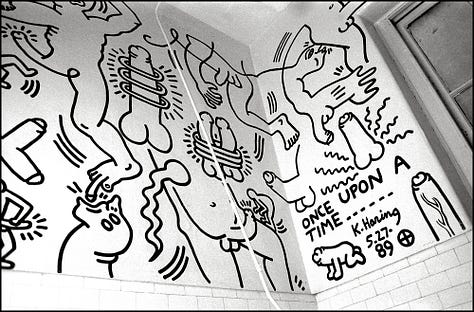
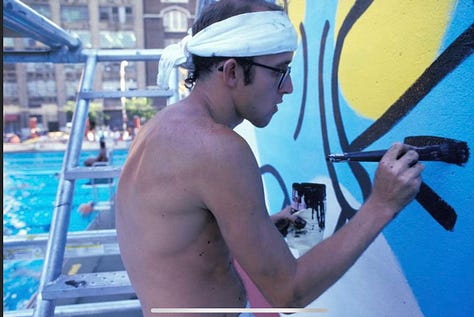
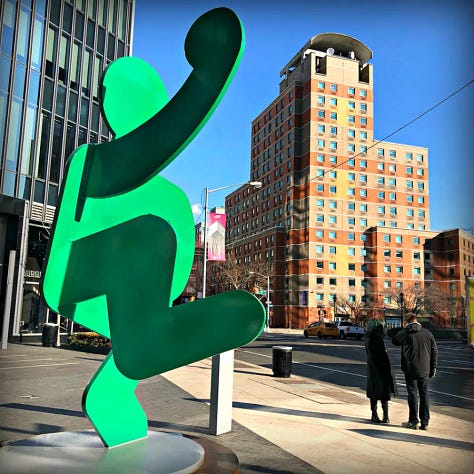
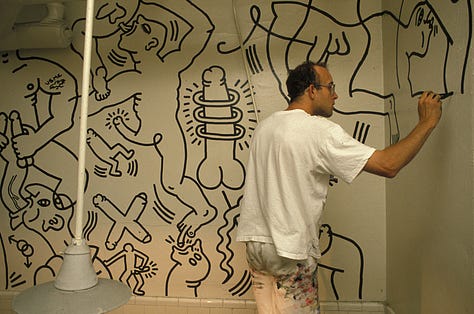
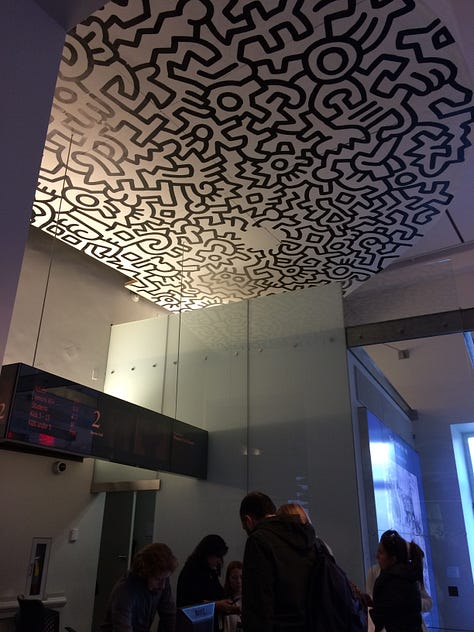
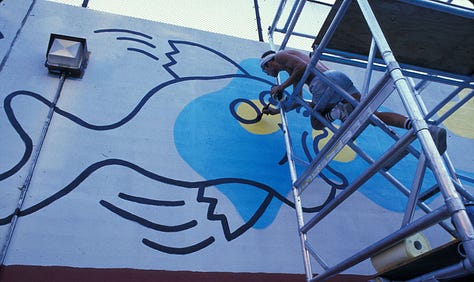
Stay tuned for PART II of this list next week!





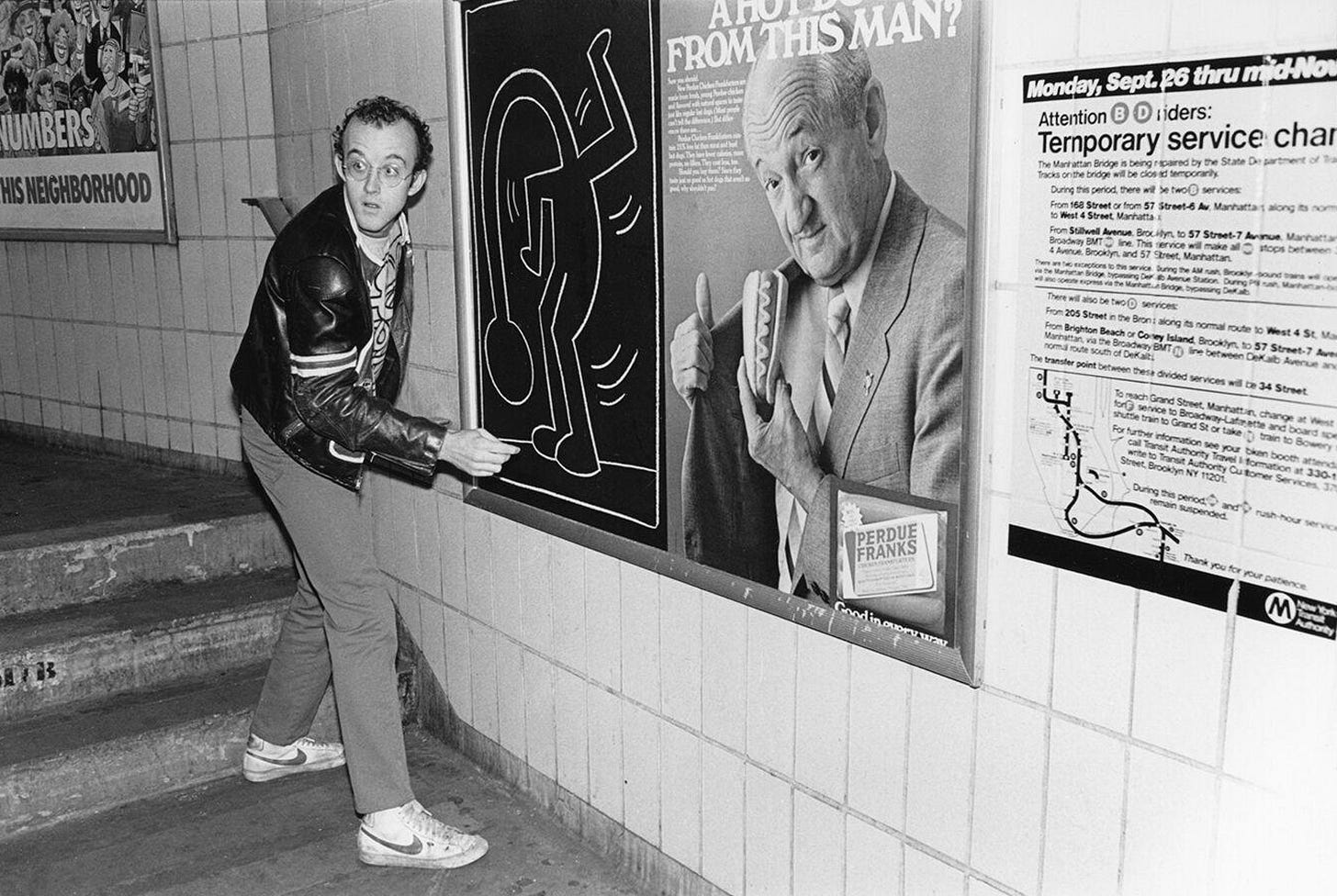
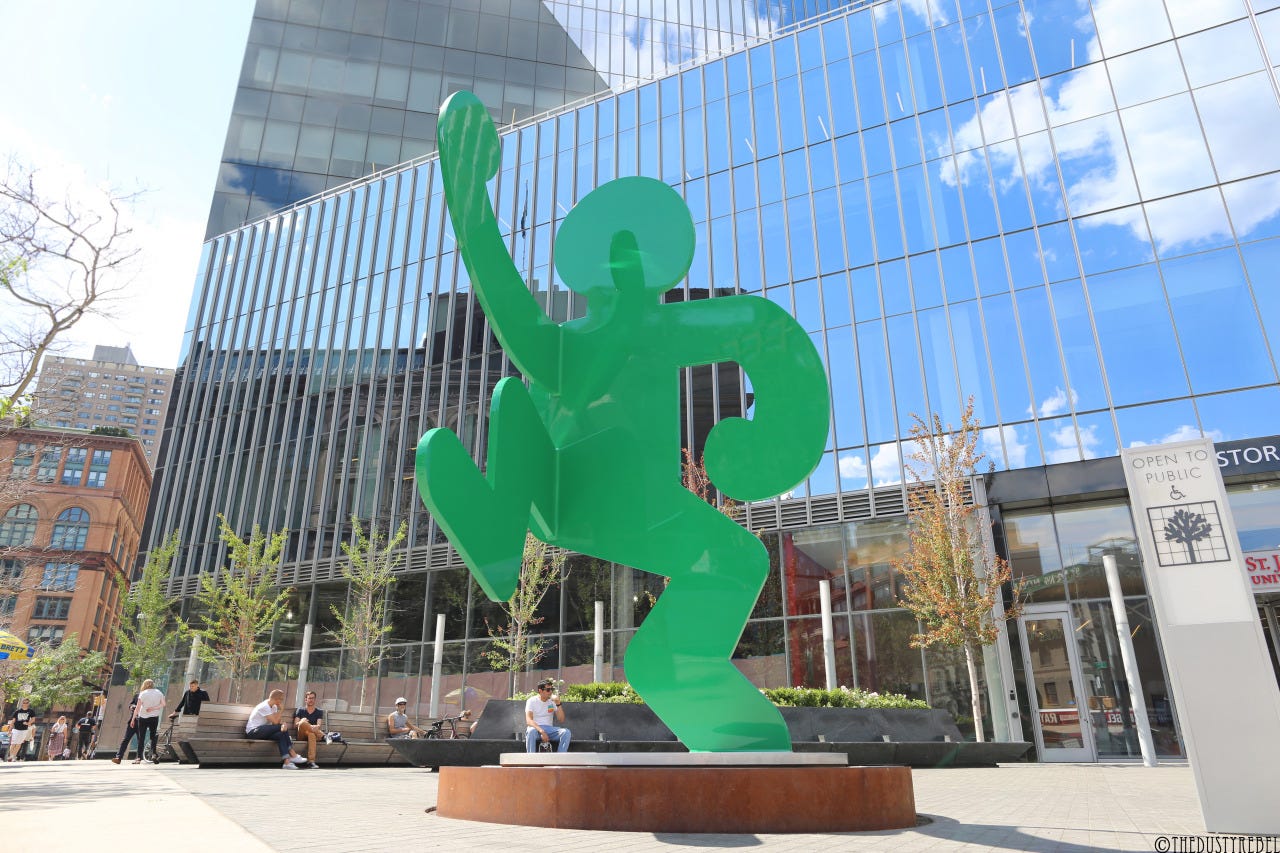
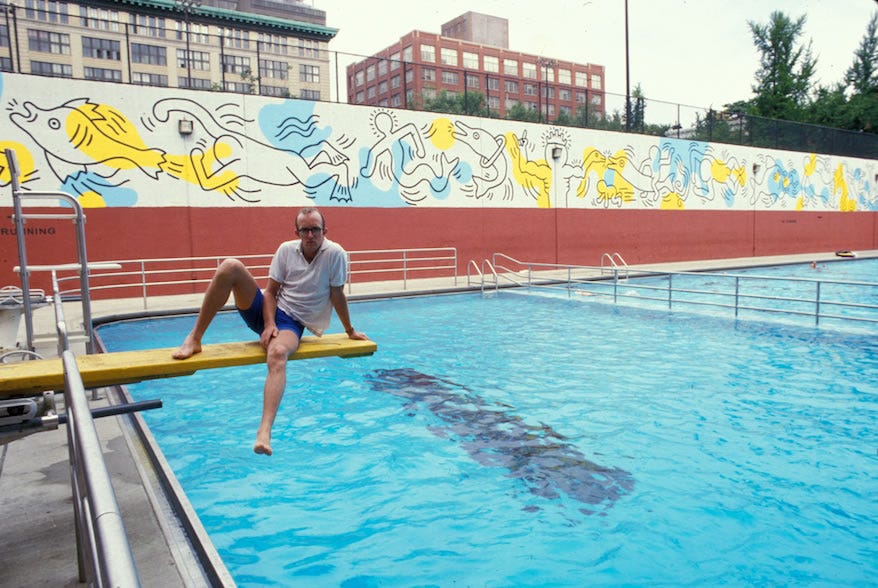
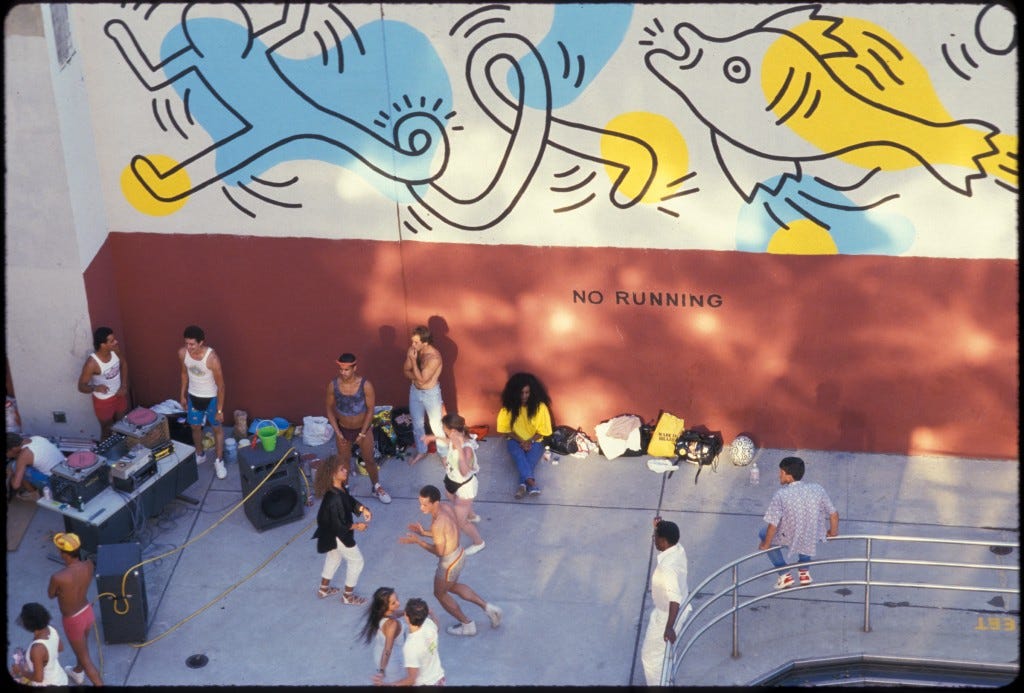

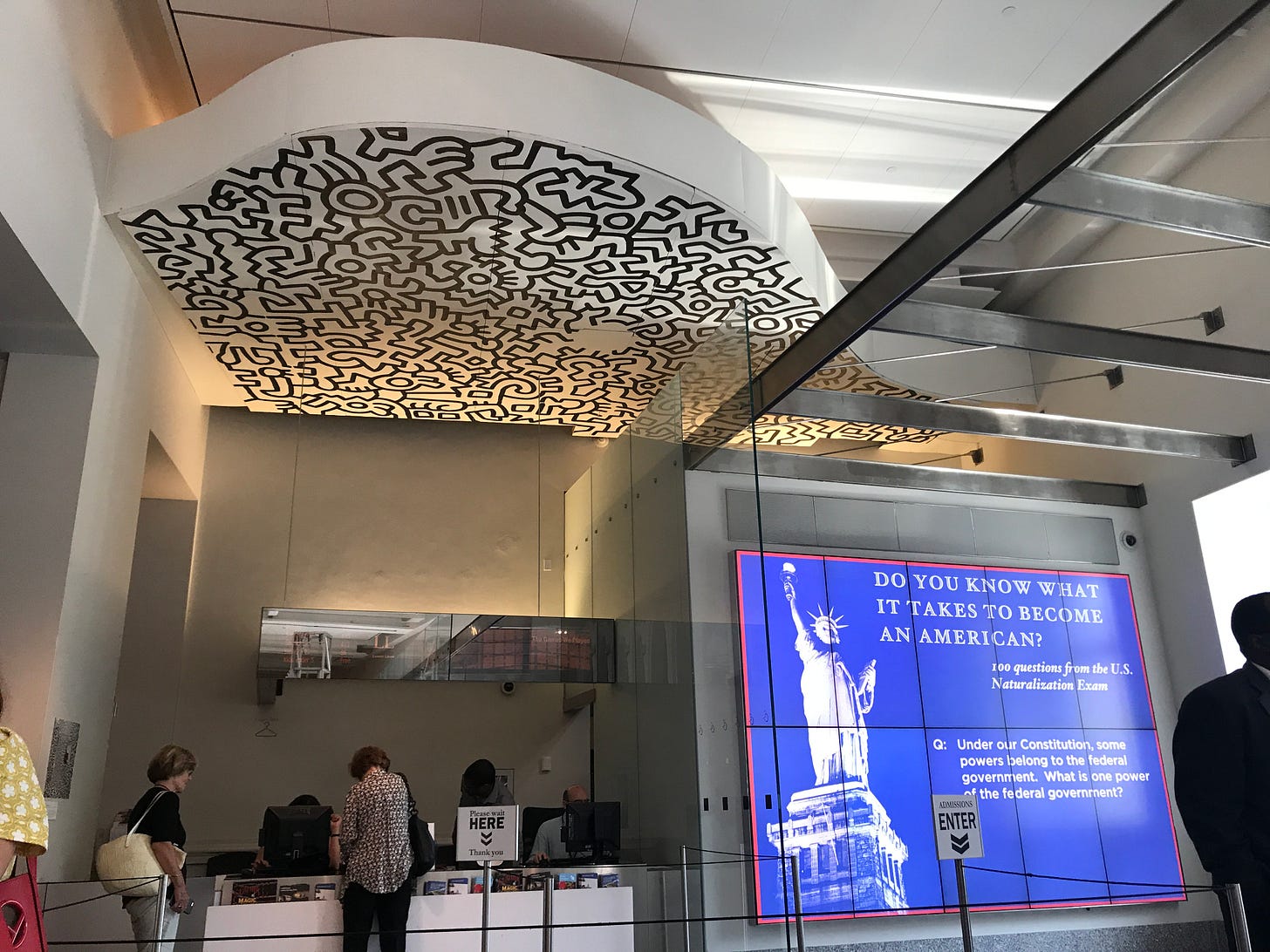
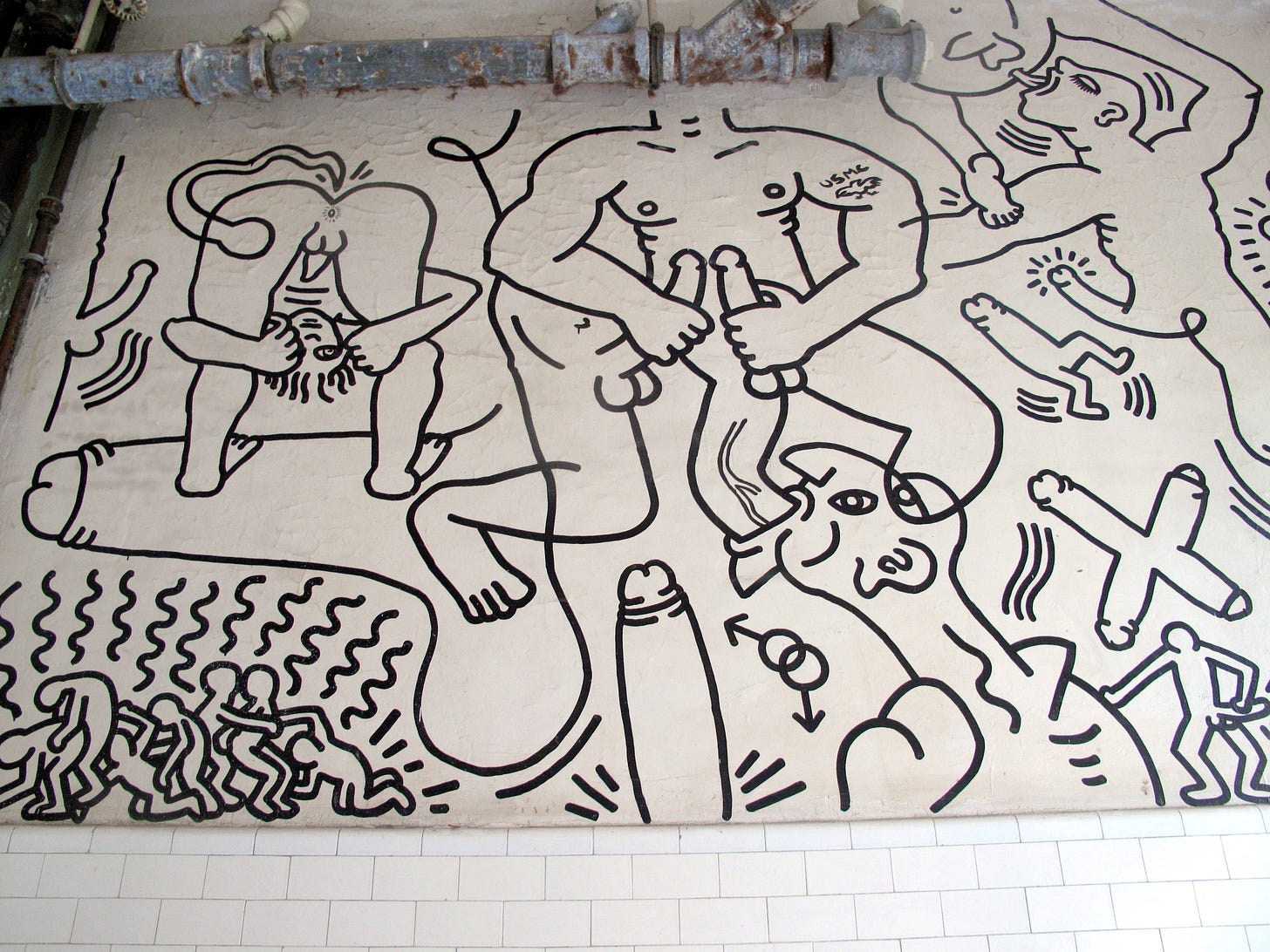
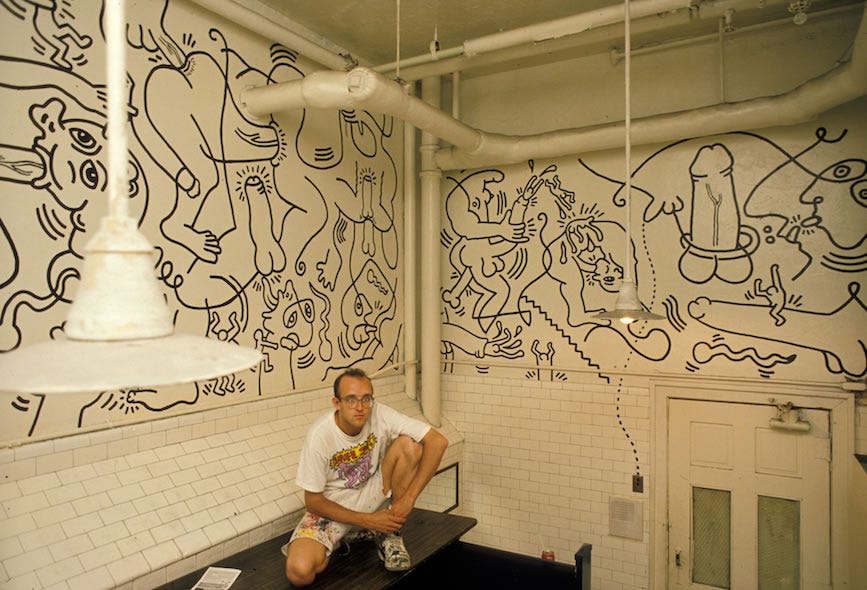
Magical. Thank you for collecting all these wonderful places for us to see his art. Can’t wait to take myself on a tour this summer!
Checked also part two. One thing is missing. The lobby of where the Keith Haring Foundation is located on Broadway. If you look through the door you see the walls and ceiling filled with KH work.